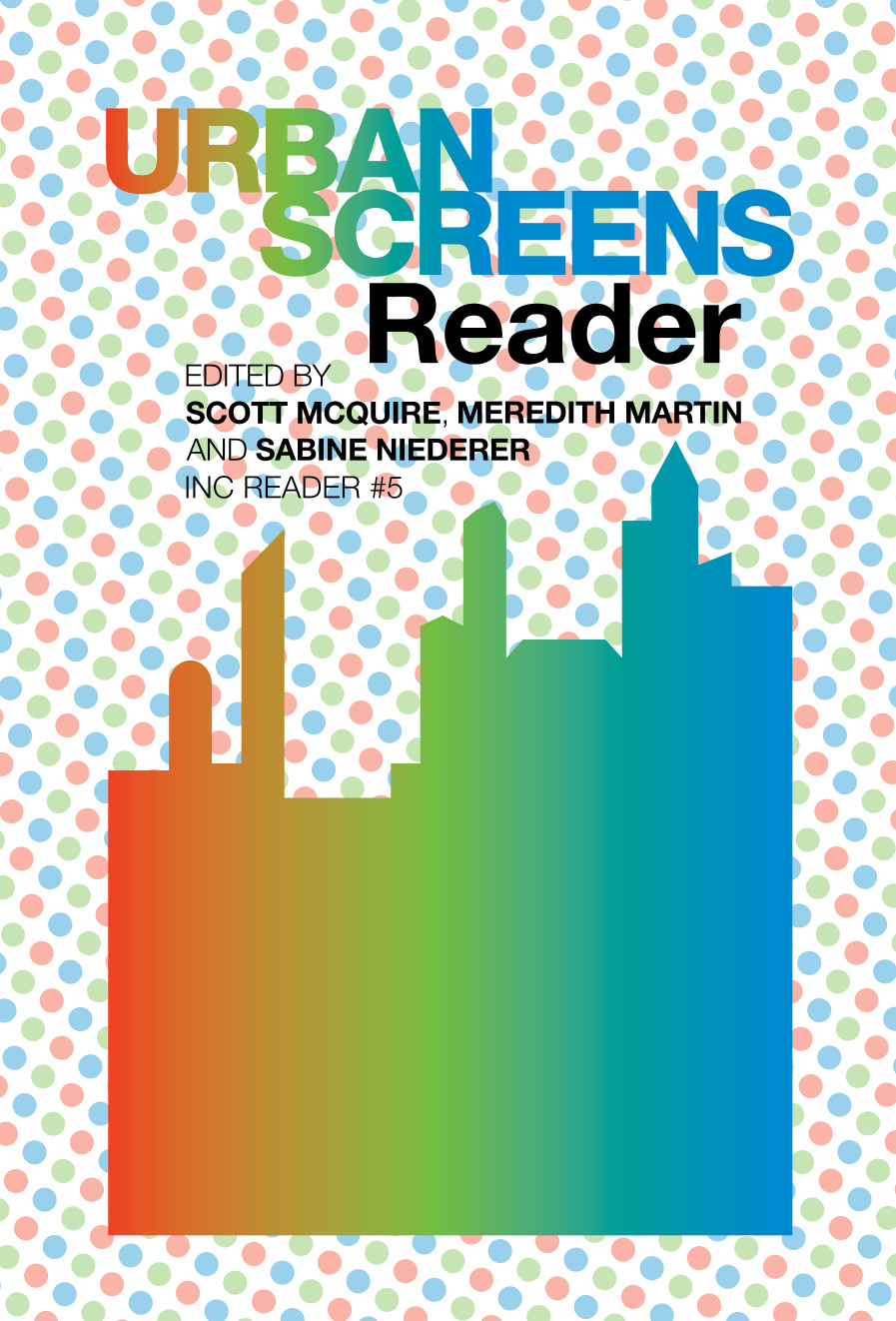Scott McQuire, Meredith Martin, Sabine Niederer (eds.): Urban Screens Reader (2009)
Filed under book | Tags: · city, public space, screen

“The Urban Screens Reader is the first book to focus entirely on the topic of urban screens. In assembling contributions from a range of leading theorists, in conjunction with a series of case studies dealing with artists’ projects and screen operators’ and curators’ experiences, the reader offers a rich resource for those interested in the intersections between digital media, cultural practices and urban space.
Urban Screens have emerged as a key site in contemporary struggles over public culture and public space. They form a strategic junction in debates over the relation between technological innovation, the digital economy, and the formation of new cultural practices in contemporary cities. How should we conceptualize public participation in relation to urban screens? Are ‘the public’ citizens, consumers, producers, or something else? Where is the public located? When a screen is erected in public space, who has access to it and control over it? What are the appropriate forms of urban planning, design and governance? How do urban screens affect cultural experiences?”
Contributors: Simone Arcagni, Alice Arnold, Giselle Beiguelman, Liliana Bounegru, Kate Brennan, Andreas Broeckmann, Uta Caspary, Sean Cubitt, Annet Dekker, Jason Eppink, Ava Fatah gen. Schieck, Mike Gibbons, M. Hank Haeusler, Bart Hoeve, Erkki Huhtamo, Karen Lancel, Hermen Maat, Meredith Martin, Scott McQuire, Julia Nevárez, Sabine Niederer, Shirley Niemans, Nikos Papastergiadis, Soh Yeong Roh, Saskia Sassen, Leon van Schaik, Jan Schuijren, Audrey Yue.
Publisher Institute of Network Cultures, Amsterdam, 2009
ISBN 9789078146100
287 pages
PDF, PDF (updated on 2018-8-10)
Comments (3)Peter Lunenfeld (ed.): The Digital Dialectic. New Essays on New Media (2000)
Filed under book | Tags: · collage, cyberspace, digital cinema, hypertext, image, interactivity, internet, pornography, screen, technology, virtual reality

The Digital Dialectic is an interdisciplinary jam session about our visual and intellectual cultures as the computer recodes technologies, media, and art forms. Unlike purely academic texts on new media, the book includes contributions by scholars, artists, and entrepreneurs, who combine theoretical investigations with hands-on analysis of the possibilities (and limitations) of new technology. The key concept is the digital dialectic: a method to ground the insights of theory in the constraints of practice. The essays move beyond journalistic reportage and hype into serious but accessible discussion of new technologies, new media, and new cultural forms.
Publisher MIT Press, 2000
ISBN 0262621371, 9780262621373
320 pages
PDF (updated on 2012-7-24)
Comments (2)Nick Montfort, Ian Bogost: Racing the Beam: The Atari Video Computer System (2009)
Filed under book | Tags: · computer games, gaming, screen, video games

The Atari Video Computer System dominated the home videogame market so completely that “Atari” became the generic term for a videogame console. The Atari VCS was affordable and offered the flexibility of changeable cartridges. Nearly a thousand of these were created, the most significant of which established new techniques, mechanics, and even entire genres. This book offers a detailed and accessible study of this influential videogame console from both computational and cultural perspectives.
Studies of digital media have rarely investigated platforms—the systems underlying computing. This book (the first in a series of Platform Studies) does so, developing a critical approach that examines the relationship between platforms and creative expression. Nick Montfort and Ian Bogost discuss the Atari VCS itself and examine in detail six game cartridges: Combat, Adventure, Pac-Man, Yars’ Revenge, Pitfall!, and Star Wars: The Empire Strikes Back. They describe the technical constraints and affordances of the system and track developments in programming, gameplay, interface, and aesthetics. Adventure, for example, was the first game to represent a virtual space larger than the screen (anticipating the boundless virtual spaces of such later games as World of Warcraft and Grand Theft Auto), by allowing the player to walk off one side into another space; and Star Wars: The Empire Strikes Back was an early instance of interaction between media properties and video games.
Montfort and Bogost show that the Atari VCS—often considered merely a retro fetish object—is an essential part of the history of video games.
Publisher MIT Press, 2009
ISBN 026201257X, 9780262012577
Length 184 pages
More info (publisher)
More info (google books)

